Big Ten Preview: Who Are the Biggest Challengers to Michigan State?

Sports Illustrated’s 2017–18 preview is guided by data from our College Basketball Projection System, a collaboration between economist Dan Hanner and SI’s Chris Johnson and Jeremy Fuchs. We project teams on a player-by-player, lineup-based level and then simulate the season 10,000 times to generate our 1–351 national rankings and conference forecasts.
These are the model’s projections for the Big Ten, including individual awards, the teams’ order of finish and (advanced and raw) stats for the top seven players in each school’s rotation.
• More Projections: Top 100 scorers | Top 100 transfers | Top 50 freshmen | NPOY
The Big Picture
One of the few things on which every college basketball observer can agree: Michigan State is the top team in the Big Ten entering this season. How the rest of the league will shake out is far less clear. Minnesota didn’t lose much from the squad that earned a No. 5 seed last March, Northwestern brings back key pieces after making the NCAA tournament for the first time in program history and a promising sophomore class headlined by a projected first-round NBA draft pick should keep Maryland in the top half of the conference standings in year one post-Melo Trimble. SI’s model doesn’t peg any of those teams as the Spartans’ biggest challenger, though.
Player of the Year: Miles Bridges, Michigan State
Just as Michigan State is an easy pick as the Big Ten favorite, Bridges is a no-brainer choice for the league’s player of the year. He could have been an NBA draft lottery pick had he chosen to leave East Lansing after his freshman season. Instead, Bridges returned to make a run at bringing Hall of Fame head coach Tom Izzo his second national championship. Bridges can hurt defenses driving to the basket and knocking down jump shots from behind the three-point line, and SI projects his scoring efficiency to increase. He’s also a productive rebounder and adaptable defender. Bridges is our No. 1 candidate for the National Player of the Year, and no other Big Ten player made our top 10.
Newcomer of the year: Mark Alstork, Illinois
Alstork was one of the most sought after targets on the graduate transfer market this offseason after electing to leave Mid-American Conference program Wright State. He chose the Illini in May over finalists LSU, South Carolina and Pittsburgh. First-year head coach Brad Underwood needed a ready-made scorer in a rotation that lost four of its five leaders in points per game from last season. Alstork is a proven bucket-getter, albeit one coming off a season more notable for the volume than the efficiency of his offense. That’s likely to continue in Champaign, but it shouldn’t keep Alstork from leading the Illini in scoring. He ranks third on SI’s list of top projected transfer scorers, at 14.7 PPG.
All-conference team & Sixth man
G: Nate Mason, Minnesota
G: Bryant McIntosh, Northwestern
F: Miles Bridges, Michigan State
F: Ethan Happ, Wisconsin
F: Vince Edwards, Purdue
Sixth man: F: Moritz Wagner, Michigan
Projected order of finish
(For teams with the same projected conference record, the tiebreaker was their place in SI’s ranking of teams 1–351, which will be revealed later this month.)
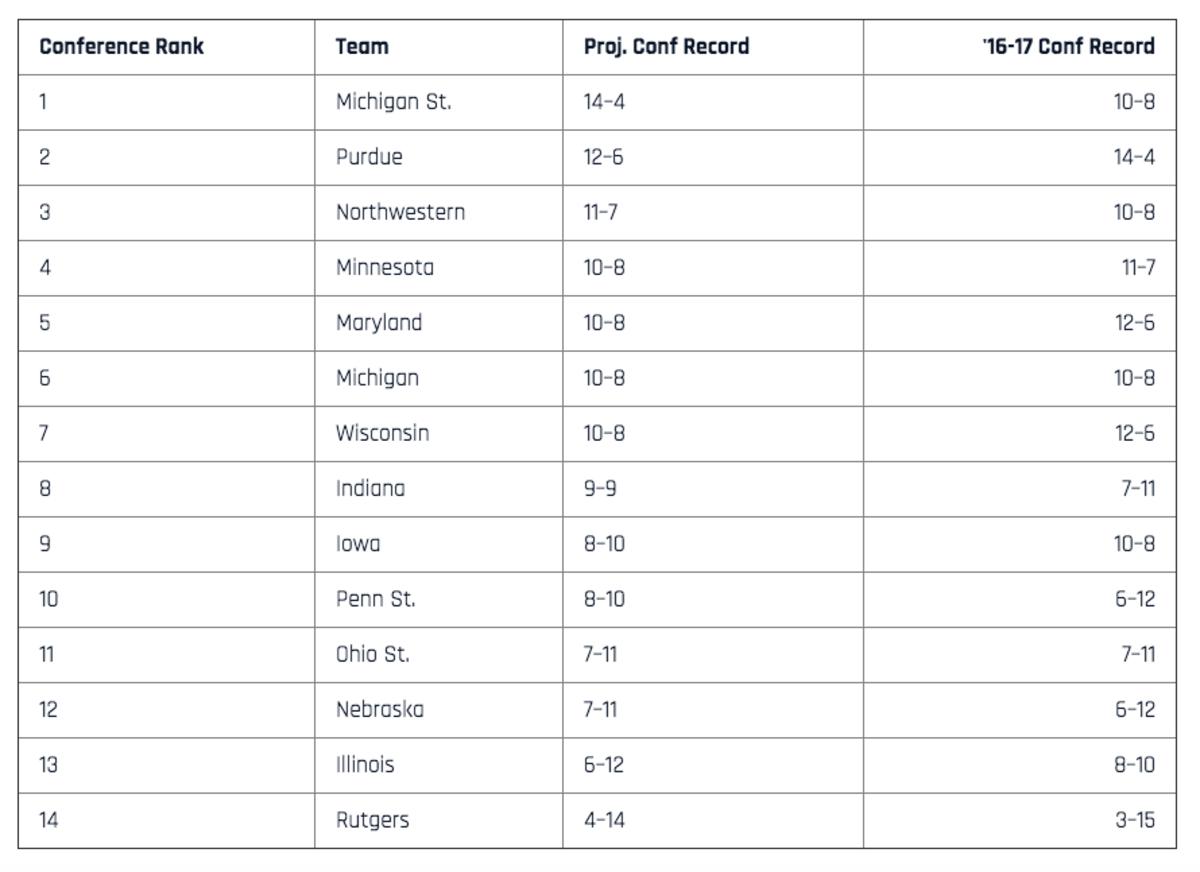
The Skinny on each team
1. Michigan State (14–4)
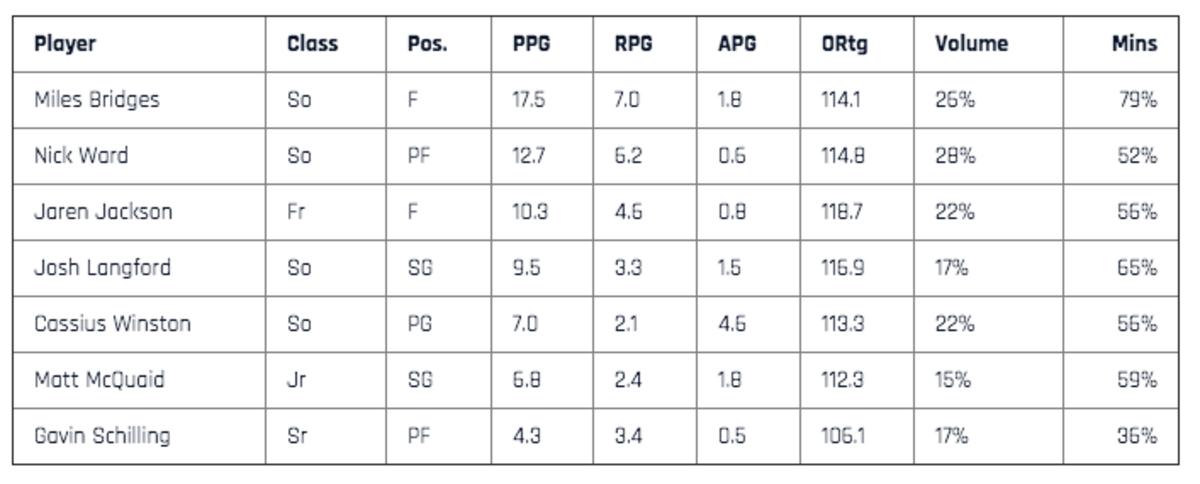
The Spartans have a pair of potential future lottery picks (including the NPOY frontrunner), a cast of former top-50 recruits who chose to come back to school as sophomores and battle-tested veterans on the perimeter and in the frontcourt. Michigan State shouldn’t run into too much trouble during conference play. Izzo just needs to have his guys ready to peak in March.
2. Purdue (12–6)
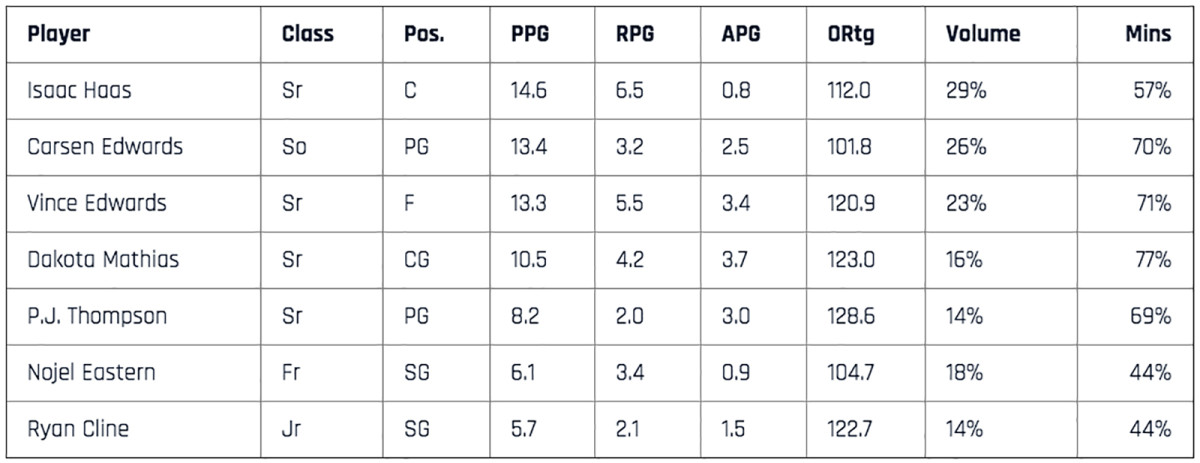
No Big Ten team lost a more important player this offseason than Purdue in conference player of the year Caleb Swanigan. We’re bullish on the Boilermakers despite that because they bring back another established player at Swanigan’s position, Isaac Haas, and will surround him with a group of long-range snipers, four of whom canned at least 40% of their threes in 2016–17.
3. Northwestern (11–7)
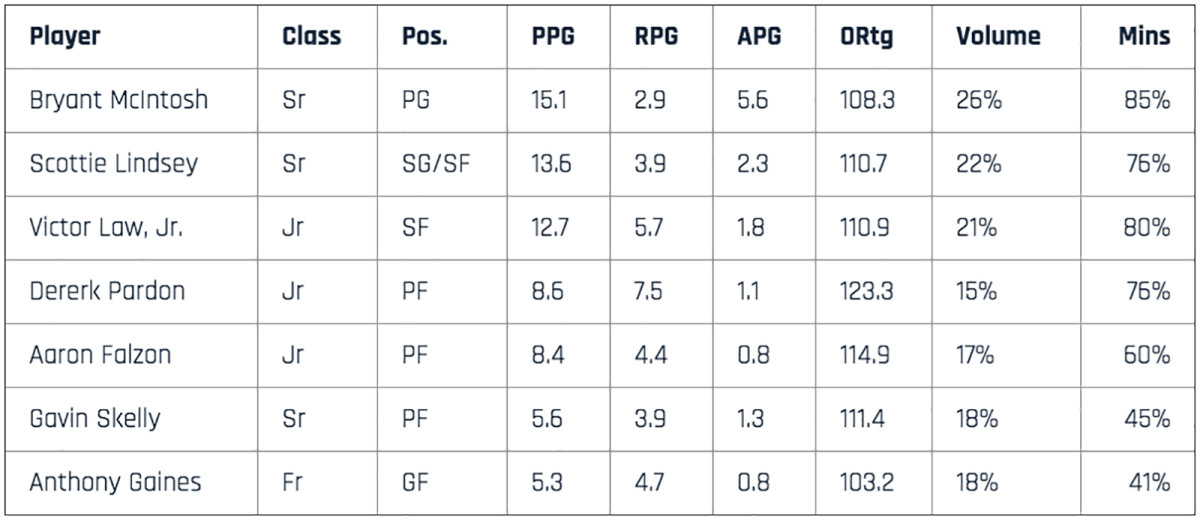
The first tourney team in Wildcats history returns mostly intact, and it’s adding a capable bench scorer in three-star freshman Anthony Gaines. Big man Dererk Pardon is an efficient interior finisher, and Bryant McIntosh and Scottie Lindsey project as one of the Big Ten’s most prolific perimeter scoring duos. Our model expects them to combine to average nearly 28 points per game.
4. Minnesota (10–8)
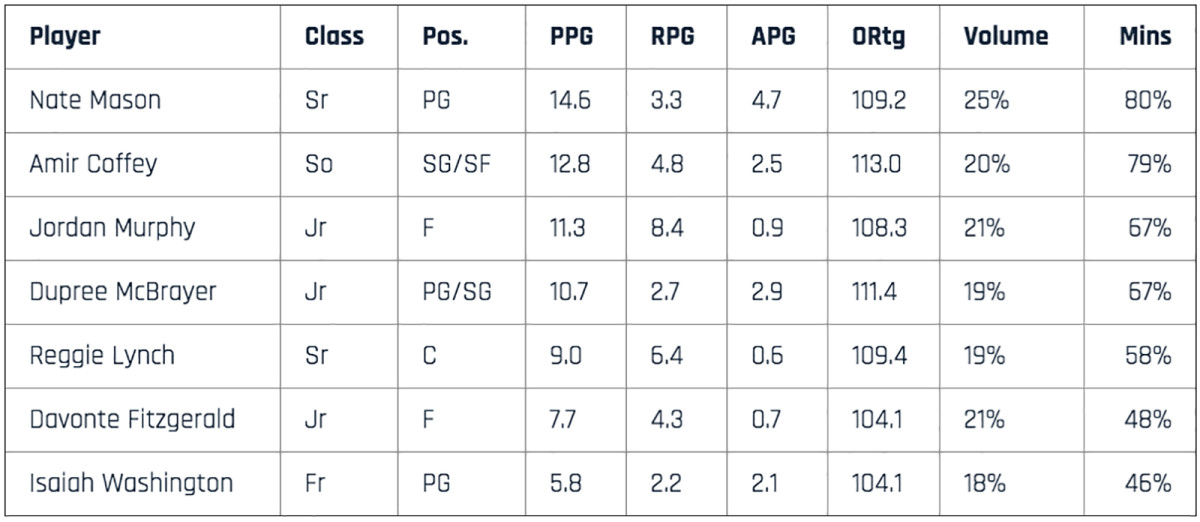
This might seem low for a squad that returns four of its five starters from a No. 5 seed. Here’s the deal: The Gophers’ favorable tourney slot painted a rosier picture than their margin-of-victory last season, and they benefited from subpar opponent three-point shooting, over which teams exert little influence. SI also is skeptical about Texas A&M transfer Davonte Fitzgerald’s chances of providing a major boost to Minnesota’s offense.
5. Maryland (10–8)
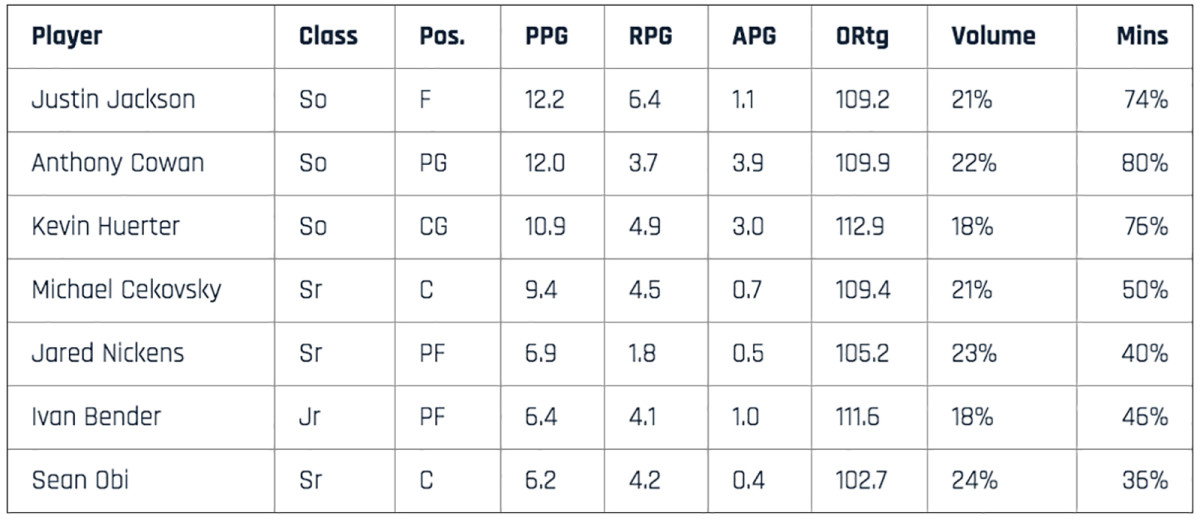
The Terrapins are well-equipped to recreate the scoring and playmaking Melo Trimble leaves behind. Anthony Cowan logged major minutes at point guard as a freshman last season, and Kevin Huerter buried nearly 40% of his 104 three-point attempts in conference play. Justin Jackson is already on NBA scouts’ radars, and he was one of the toughest cuts from our preseason all-conference team.
6. Michigan (10–8)
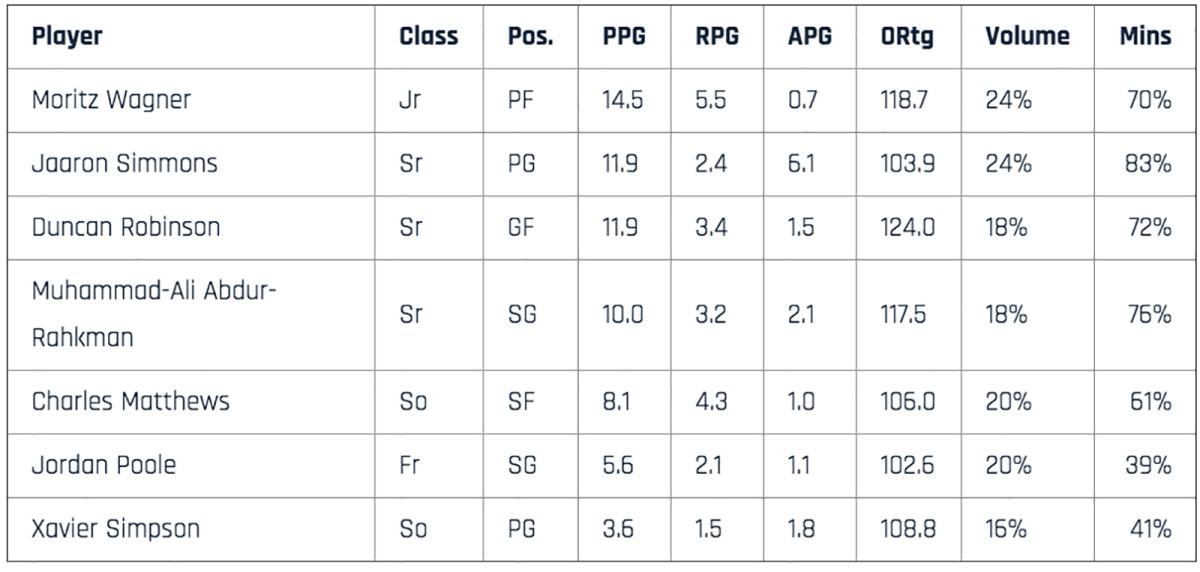
Like Illinois with Alstork, Michigan will hope a graduate transfer from the MAC, Ohio’s Jaaron Simmons, can produce against stiffer opposition in a high-major conference. The Wolverines don’t project as a stout defensive team, but they’ll be able to stress opponents by spreading the floor with shooters like Wagner, Duncan Robinson and Muhammad-Ali Abdur Rahkman.
7. Wisconsin (10–8)
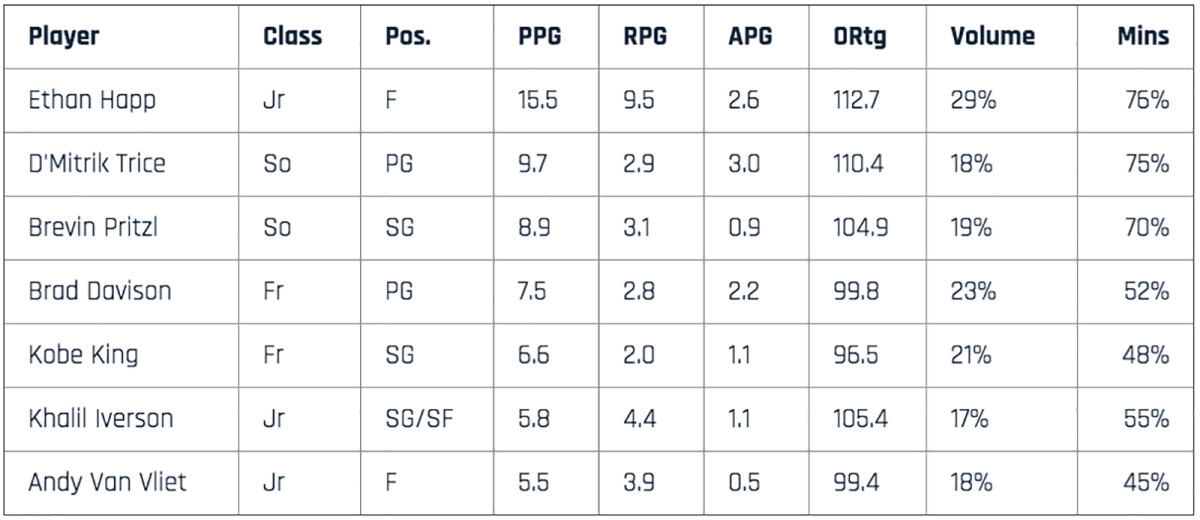
It’s borderline heretical to question whether Wisconsin can finish fourth or better in the Big Ten. (The Badgers have done it every season this century.) Head coach Greg Gard’s team could outperform our projection if a few efficient scoring options emerge around big man Ethan Happ, who reportedly worked this summer on extending his shooting range but has yet to attempt a three entering his third season at Wisconsin.
8. Indiana (9–9)
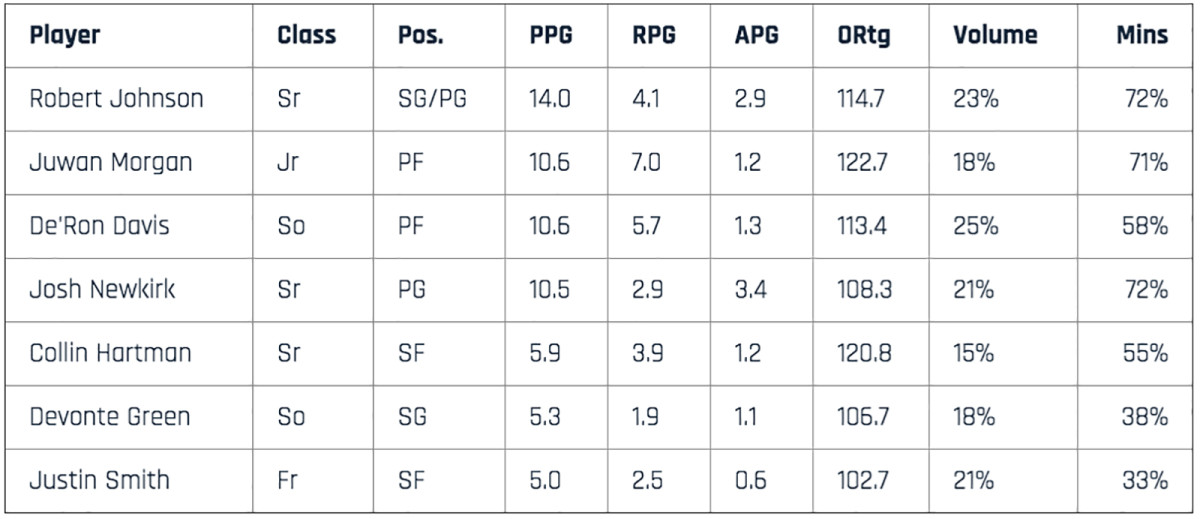
The Hoosiers’ long-term outlook under first-year head coach Archie Miller is bright, but they’re going to have to scrap for an invitation to the NCAAs this season. Combo guard Robert Johnson, frontcourt duo Juwan Morgan and De’Ron Davis and fifth-year wing Collin Hartman—who sat out last season with a knee injury—give the Hoosiers the foundation of an above-average offense.
9. Iowa (8–10)
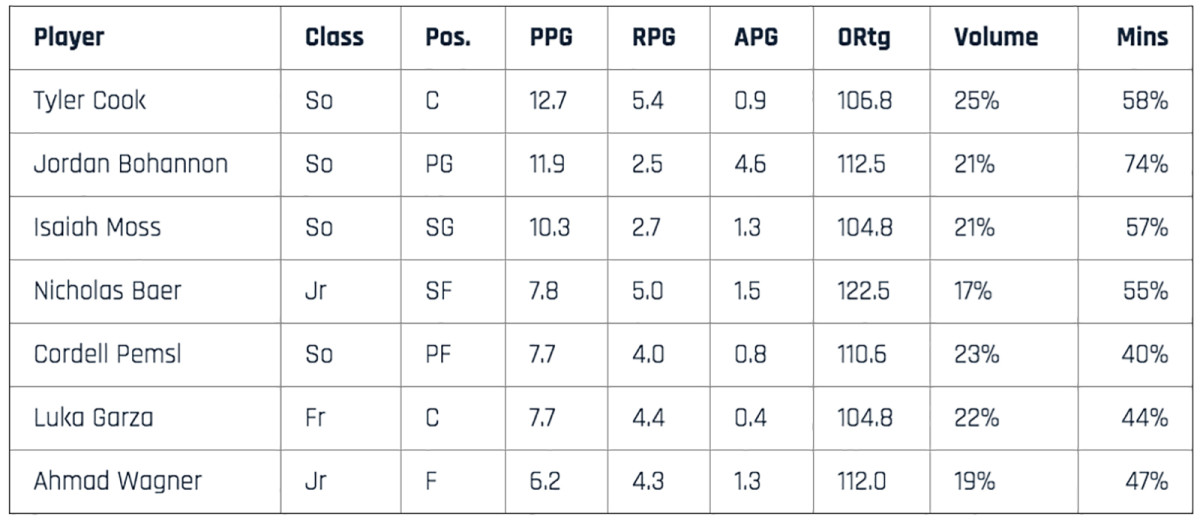
How will the Hawkeyes replace Peter Jok, the Big Ten’s leader in points per game in 2016–17? We like center Tyler Cook, a former top-70 recruit from St. Louis, and point guard Jordan Bohannon to supply Iowa with double-digit scoring from the interior and the perimeter. The Hawkeyes should give freshman Luka Garza a frontcourt rotation spot from the jump.
10. Penn State (8–10)
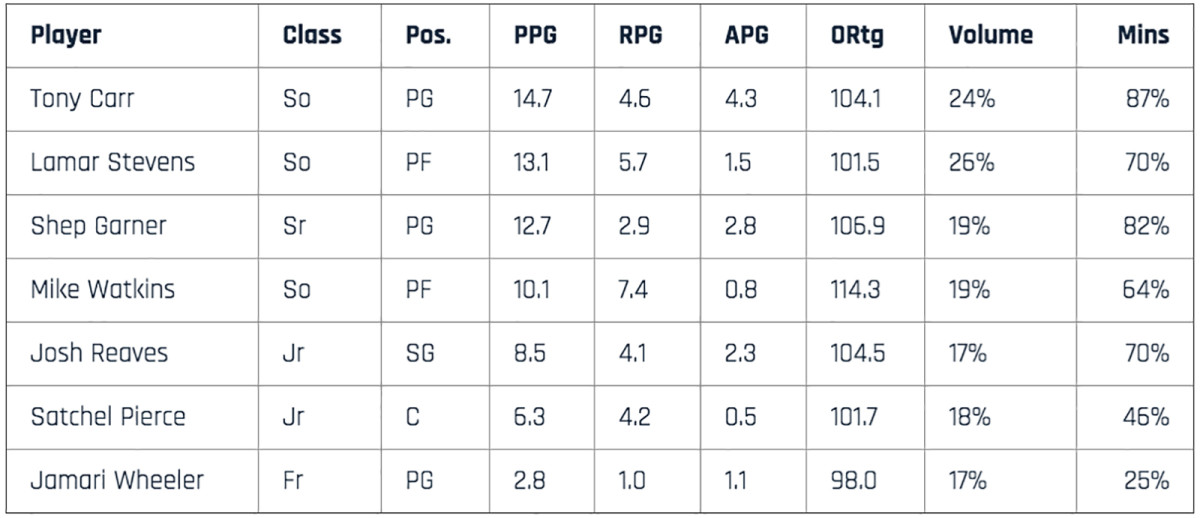
It’s looking like the Nittany Lions are going to have to wait at least another season to make the tourney for the first time since 2011, but opponents are going to have to work to manufacture good looks against head coach Pat Chambers’s team, and they won’t have an easy time contending with sophomore trio Tony Carr, Lamar Stevens and Mike Watkins.
11. Ohio State (7–11)
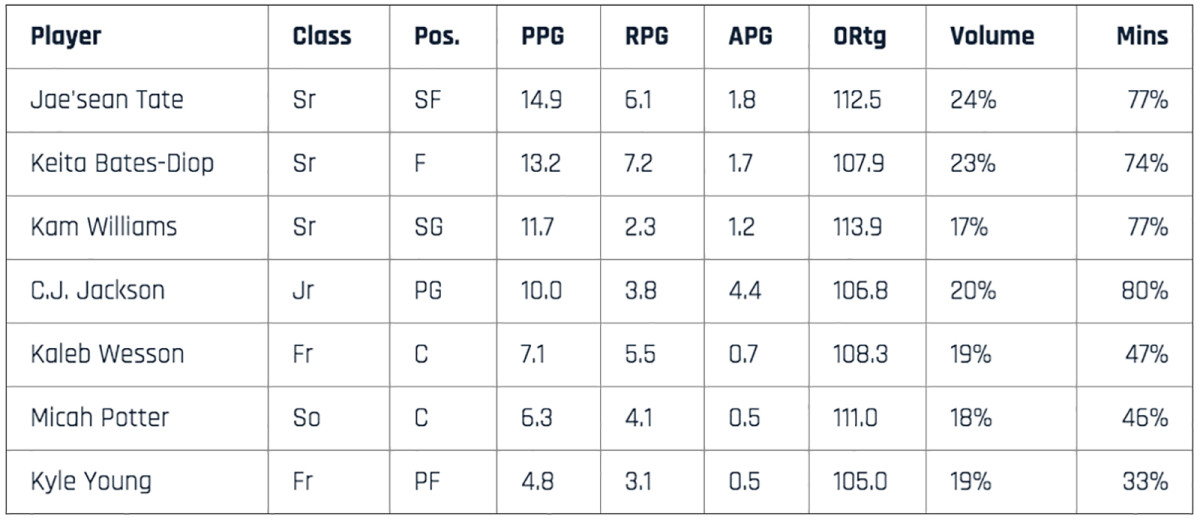
Buckeyes coach Chris Holtmann is only a few months into his new gig after leaving Butler. The roster former head coach Thad Matta left behind includes three upperclassmen projected to score at least 11 points per game (Jae’Sean Tate, Keita Bates-Diop, Kam Williams), but it’s dubious whether that’ll be enough for Ohio State to improve on the seven conference wins it posted last season.
12. Nebraska (7–11)
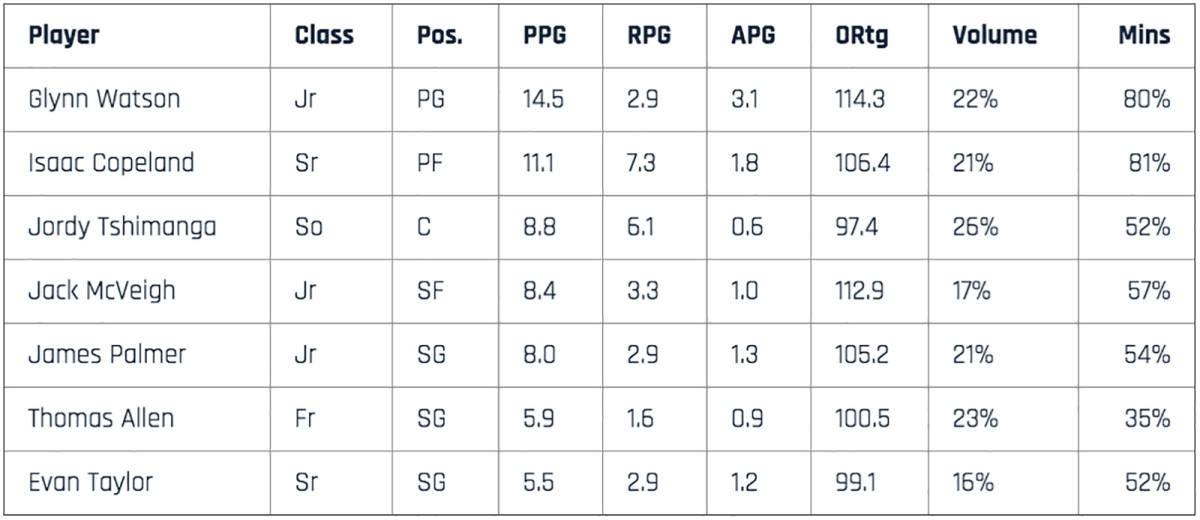
Glynn Watson Jr. may be the most underrated point guard in the Big Ten; we project him to average nearly 15 points per game while posting a team-high offensive rating of 114.3. He’ll have help in the frontcourt from former top-25 recruit Isaac Copeland, a stretch four who has two years of eligibility remaining after transferring from Georgetown.
13. Illinois (6–12)
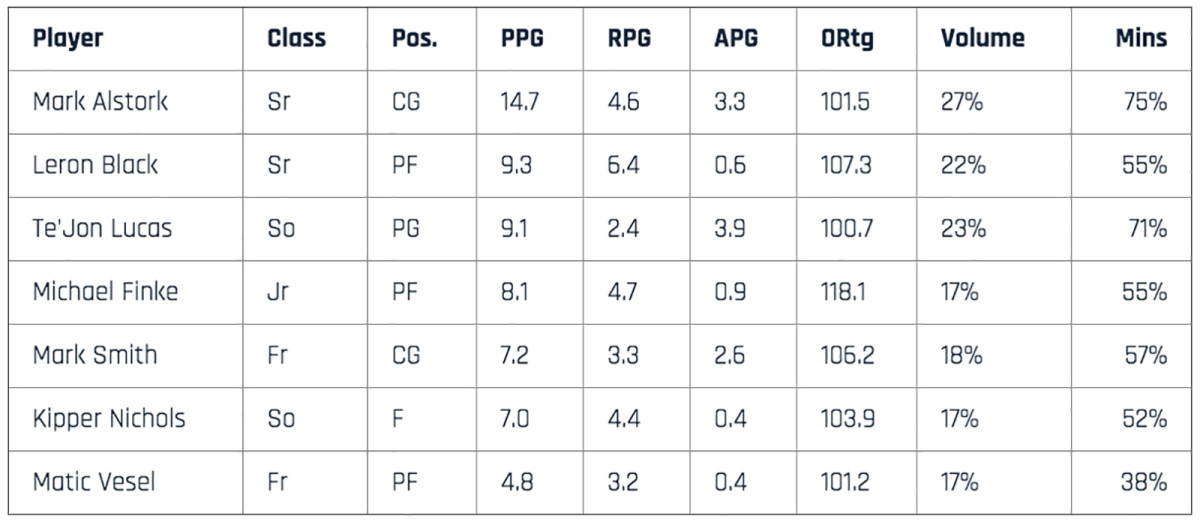
Brad Underwood coached one of the best offenses in the country at Oklahoma State last season. There is virtually no chance that he even comes close to doing that again this season at Illinois despite the arrival of Alstork. Perimeter personnel turnover should open up opportunities for sophomore Te’Jon Lucas and Mark Smith, a top-100 recruit from Edwardsville, Ill., who was named the state’s Mr. Basketball in 2017.
14. Rutgers (4–14)
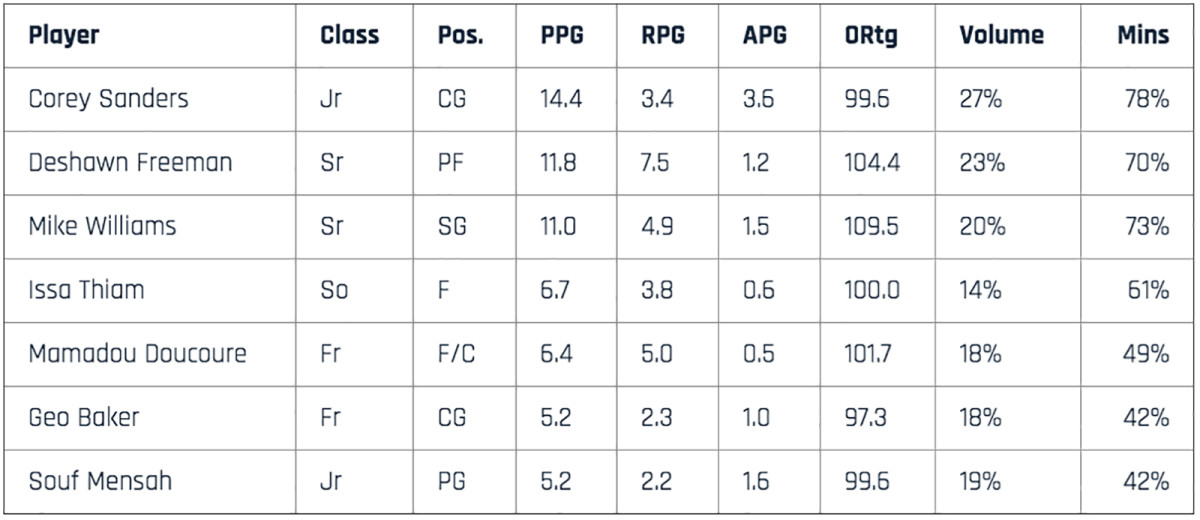
Maybe the most interesting part about the Scarlet Knights’ second season under head coach Steve Pikiell will be keeping track of how two incoming freshmen, power forward/center Mamadou Doucore and combo guard Geo Baker, perform against college competition. Doucore was thought to be a class of 2018 prospect when he issued a verbal commitment to Rutgers last December, but he should upgrade its big man rotation right away after reclassifying.
